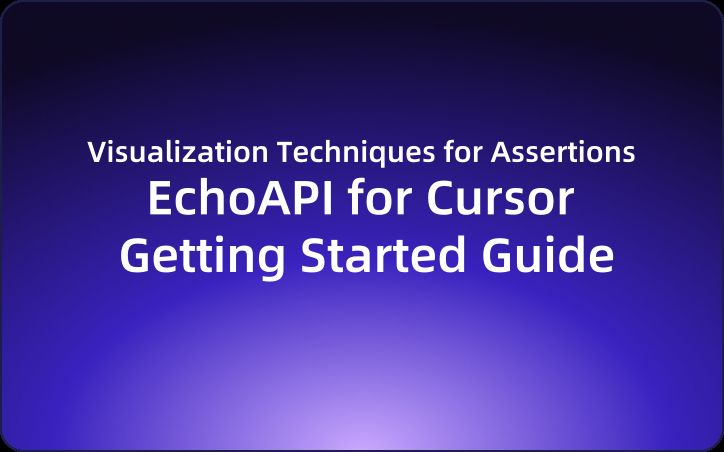EchoAPI for Cursor Getting Started Guide:Visualization Techniques for Assertions
In API development, assertions using scripts play a crucial role; however, their complexity can act as a barrier to learning, often giving developers a frustrating experience.
In API development, assertions using scripts play a crucial role; however, their complexity can act as a barrier to learning, often giving developers a frustrating experience. Specifically, the code required to check for certain responses is often verbose and difficult to understand, imposing a steep learning curve on new team members. This complexity can lead to slower development speeds and challenges in code reviews.
Innovation in EchoAPI for Cursor: Visual Assertions
To address this, EchoAPI for Cursor introduces its visualization feature for assertions. This innovative capability visually represents the assertion process and allows for easy setup through drag-and-drop or simple selections, significantly reducing the learning curve. Furthermore, intuitive operations enable efficient and rapid assertion configuration, greatly improving the development process.
What is EchoAPI for Cursor?
EchoAPI for Cursor is a lightweight REST API client extension designed specifically for Cursor. This tool emphasizes simplicity, a clean design, and local storage capabilities, all offered for free. It is ideal for developers looking to quickly design and debug APIs.
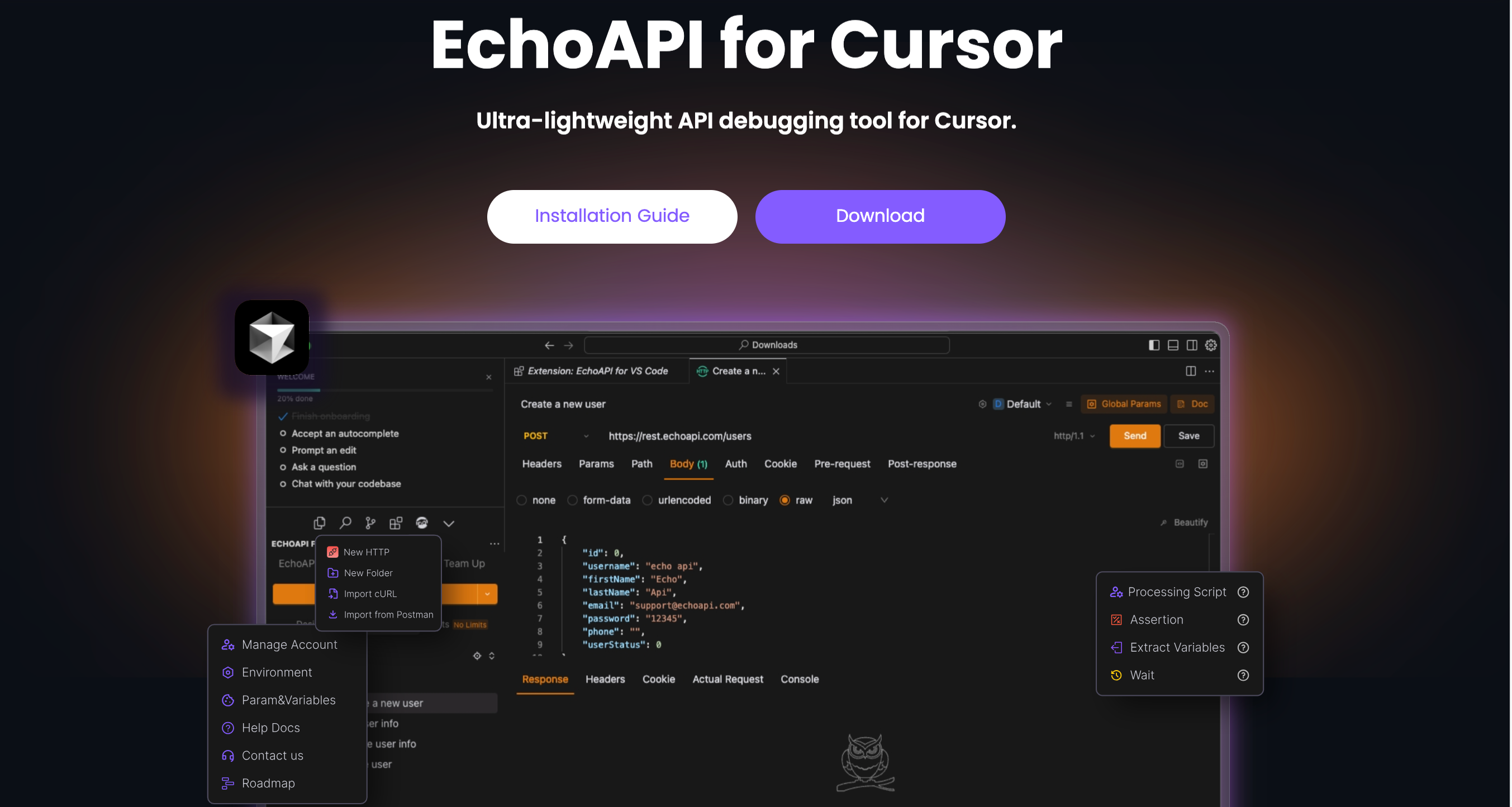
Types of Assertions Supported by EchoAPI for Cursor
EchoAPI for Cursor supports a variety of assertion types that can validate diverse elements, including:
- Response JSON: Validate the content of responses in JSON format.
- Response XML: Verify response data in XML format.
- Response Text: Evaluate plaintext responses.
- Response Header: Check HTTP header information in the response.
- Response Cookie: Assertions targeting cookies.
- Code: Confirm status codes.
- Response Time: Assess response times.
- Temporary Variables: Custom evaluations using temporary variables.

Adding Assertions
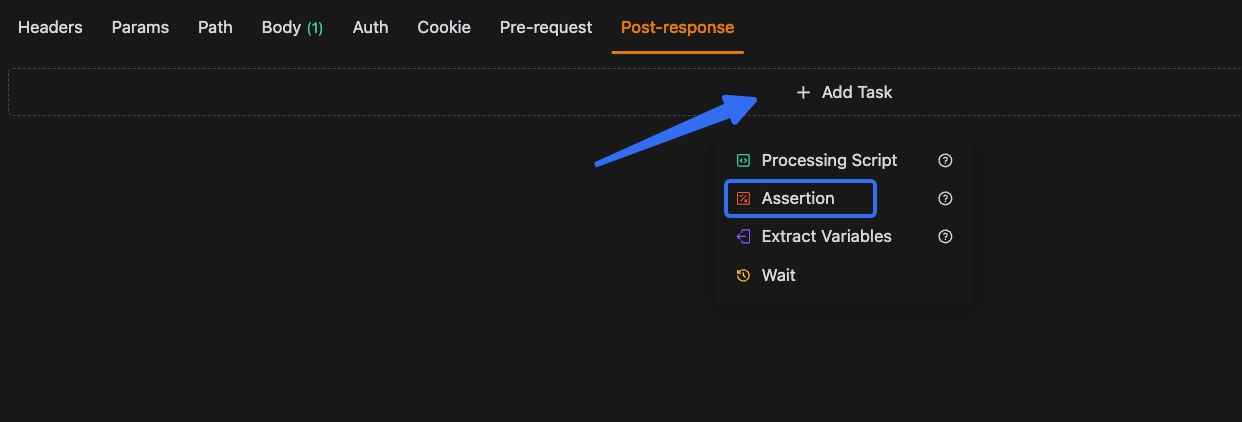
Displaying Results

Real-World Examples of Visualization Assertions
The following scenarios demonstrate how to use the visualization assertions effectively:
1. Assertion that the Status Code is 200
Set "200" in the status code box and simply confirm if it’s OK.
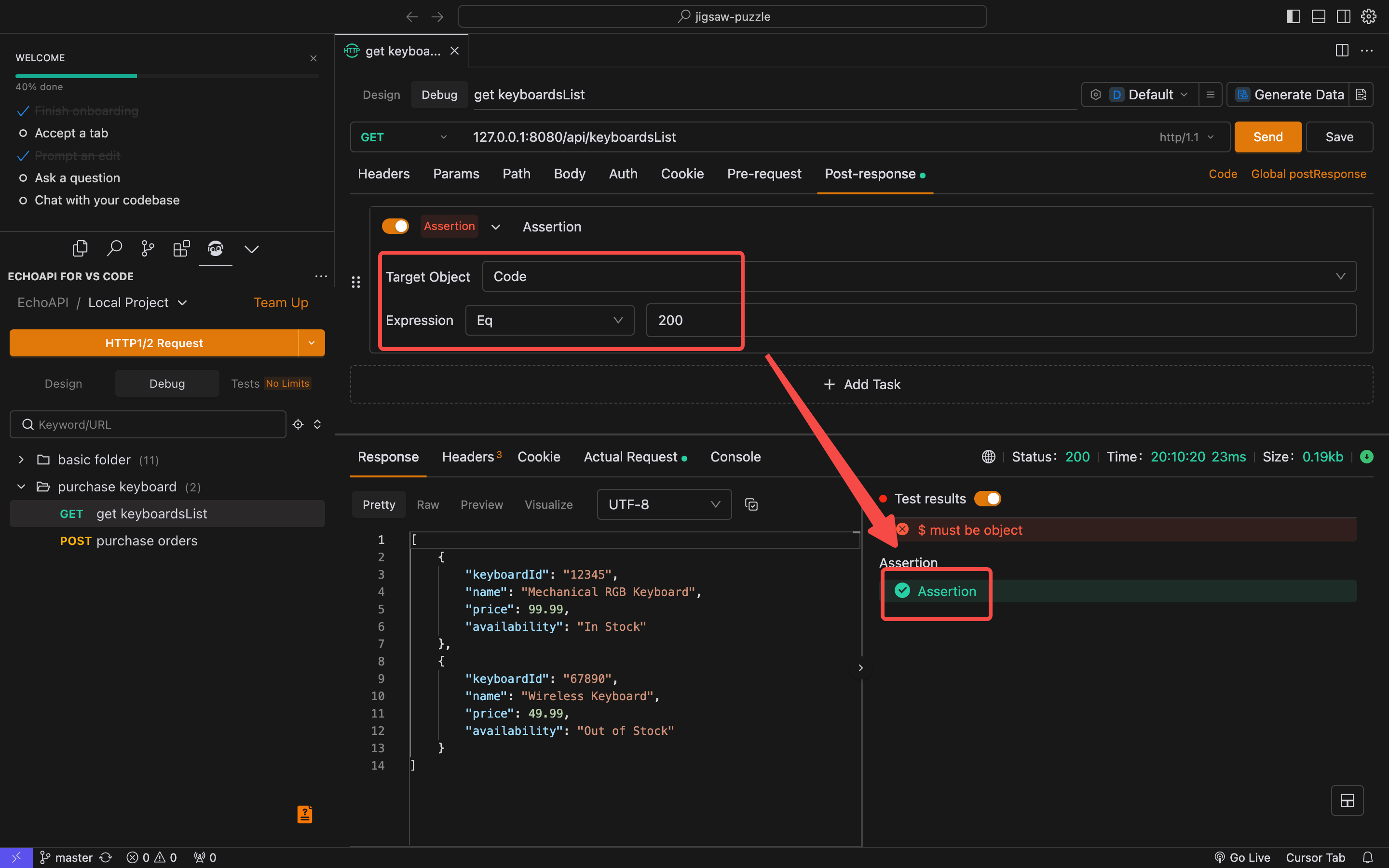
2. Confirming the Content-Type is application/json
In the Response Header settings, select that the Content-Type is application/json, and click the confirmation button.
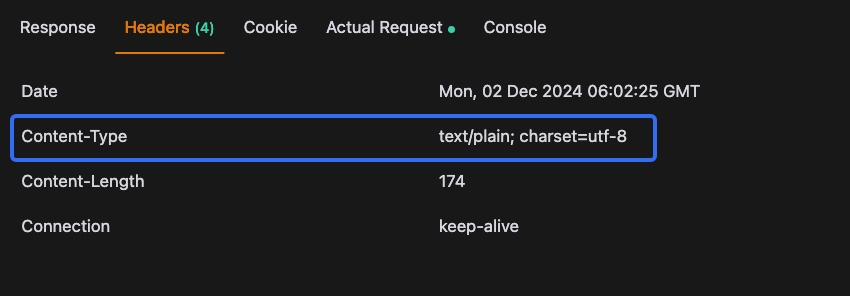
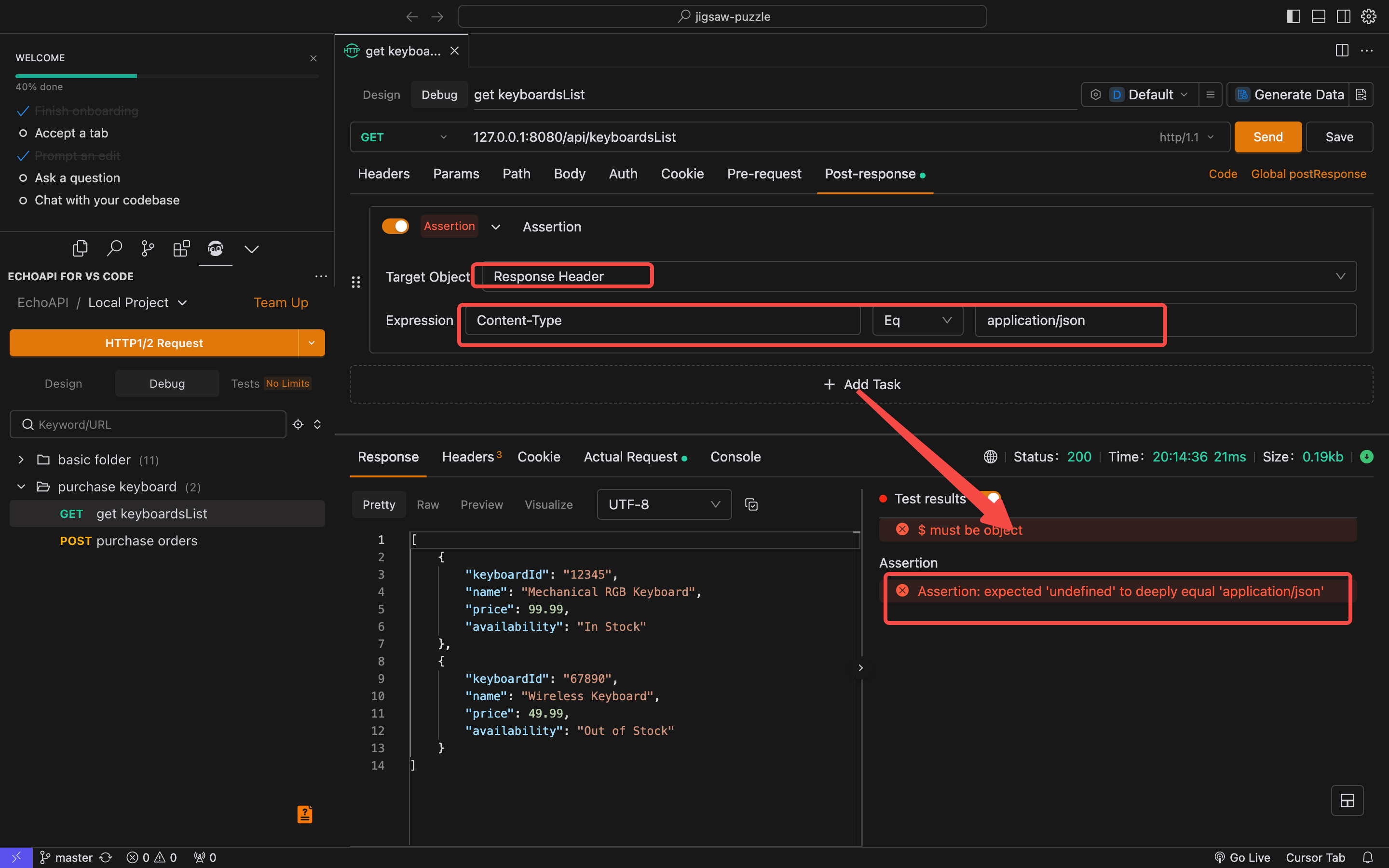
3. Ensuring Response Time is Under 1000ms
Utilize the response time slider and set it to "under 1000ms," then decide if it’s abnormal.
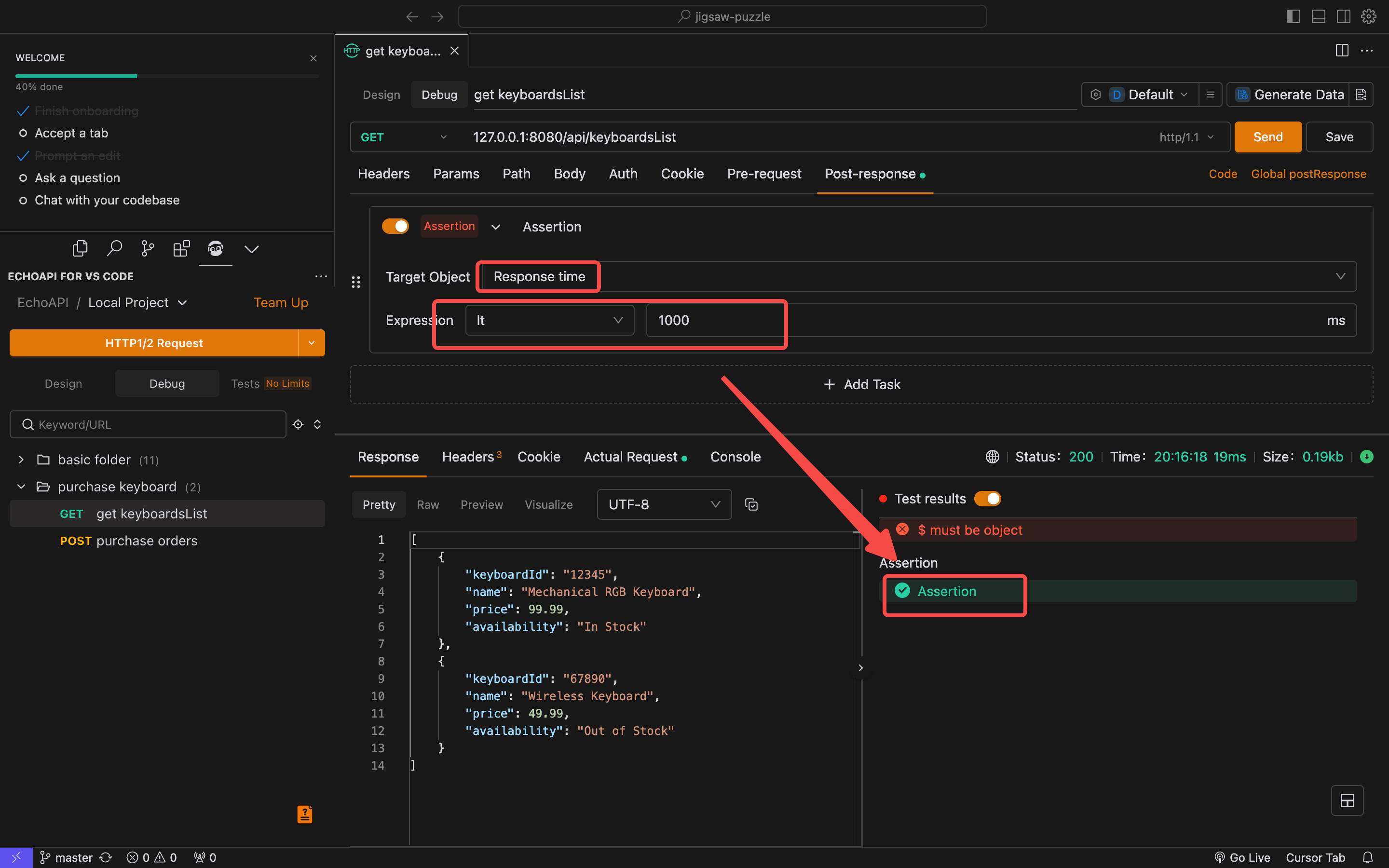
- Verifying
keyboardIdin the Response Body is12345
Check thekeyboardIdfield is12345in the visual interface of the Response JSON or Text editor.
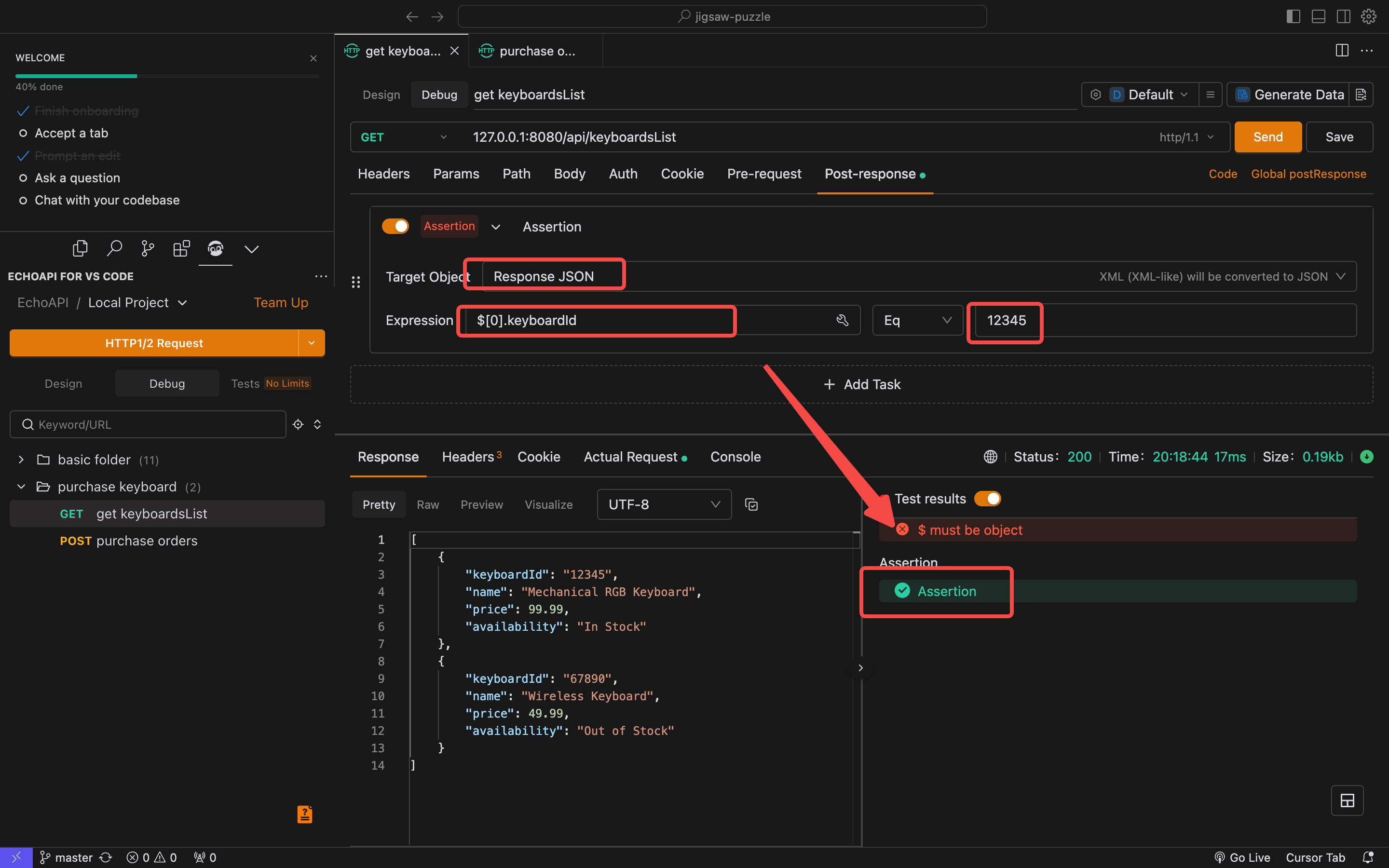
Using Conditional Assertions
When using conditions such as Eq (equal), NEq (not equal), LT (less than), LTE (less than or equal), GT (greater than), GTE (greater than or equal), Contains, or NContains (does not contain), you can enter comparison values in the input box and also utilize variables, for example: {{key}}.

If the condition is Regex (regular expression matching), you can input the regular expression in the box, such as /[a-z]*\d*/ to match the expected pattern.

For conditions such as In (member of a set) or NIn (not a member of a set), you can enter multiple items by splitting them with the enter key.

Conclusion
The visualization feature for assertions in EchoAPI for Cursor sets a new standard for API testing. This system eliminates the hassle of script-based assertions, providing an intuitive and efficient testing environment. As a result, the overall development speed and accuracy of the entire team improve, enabling rapid feedback and effective error handling. Consequently, developers can focus more on enhancing product quality.









 EchoAPI for VS Code
EchoAPI for VS Code

 EchoAPI for IntelliJ IDEA
EchoAPI for IntelliJ IDEA

 EchoAPl-Interceptor
EchoAPl-Interceptor

 EchoAPl CLI
EchoAPl CLI
 EchoAPI Client
EchoAPI Client API Design
API Design
 API Debug
API Debug
 API Documentation
API Documentation
 Mock Server
Mock Server




